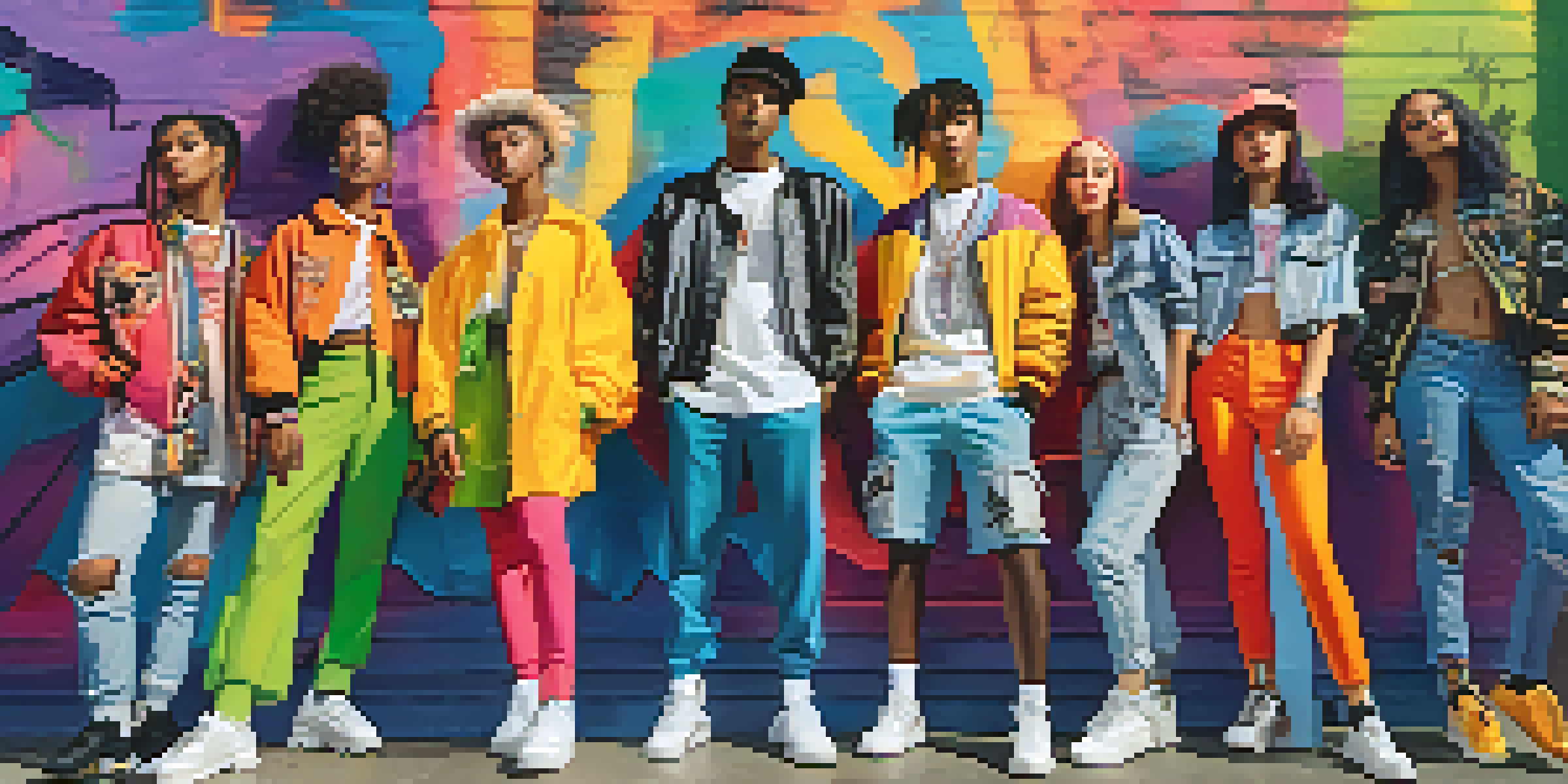Fashion Marketing Strategies for Gender Fluid Audiences

Understanding Gender Fluidity in Fashion Marketing
Gender fluidity represents a spectrum of gender identities that can change over time, making it essential for brands to understand this concept deeply. Instead of adhering to traditional binary notions of gender, many consumers seek fashion that resonates with their unique identities. Recognizing this shift allows brands to tailor their marketing strategies more effectively, ensuring they connect with a diverse audience. By embracing gender fluidity, brands can foster inclusivity and create a more welcoming environment for all consumers.
Emphasizing Inclusivity in Brand Messaging
Inclusivity should be at the forefront of any marketing strategy targeting gender fluid audiences. Crafting messages that celebrate diversity can resonate deeply and create a sense of belonging. Brands like ASOS and H&M have successfully embraced this approach by using models of various gender identities in their campaigns. By highlighting inclusivity in messaging, brands not only attract a broader audience but also build loyalty among consumers who appreciate representation.
Embrace Gender Fluidity for Inclusivity
Brands that understand and embrace gender fluidity can create more inclusive marketing strategies that resonate with diverse audiences.
Utilizing Social Media for Engagement
Social media platforms are powerful tools for engaging gender fluid consumers. Brands can use these channels to showcase diverse styles and foster community discussions around gender identity. For instance, platforms like Instagram and TikTok allow for user-generated content that can amplify authentic voices and experiences. By actively participating in these conversations, brands can strengthen their connection with audiences and promote a sense of community.
Creating Gender-Neutral Fashion Lines
Developing gender-neutral fashion lines is a crucial step towards appealing to gender fluid consumers. This approach not only broadens the market but also aligns with the values of inclusivity and diversity. Brands such as Telfar and Wildfang have successfully launched collections that cater to all gender identities, demonstrating that style should not be confined to traditional norms. By offering versatile clothing options, brands can empower consumers to express themselves freely.
Leverage Social Media for Connection
Utilizing social media platforms allows brands to engage with gender fluid consumers and foster community discussions around identity.
Leveraging Influencers Within the Gender Fluid Community
Influencer marketing can be particularly effective when targeting gender fluid audiences. Collaborating with influencers who identify as gender fluid or non-binary can help brands reach their target demographic authentically. These influencers often have dedicated followings that trust their recommendations, making them valuable partners in conveying brand messages. By aligning with the right influencers, brands can enhance their credibility and visibility within this community.
Incorporating Feedback for Continuous Improvement
Listening to customer feedback is vital for brands aiming to serve gender fluid audiences effectively. By soliciting input through surveys or social media, brands can gain valuable insights into consumer preferences and experiences. This feedback loop can guide product development and marketing strategies, ensuring they remain relevant and resonate with the audience. Adopting a responsive approach not only fosters trust but also demonstrates a brand's commitment to inclusivity.
Prioritize Feedback for Improvement
Listening to customer feedback is essential for brands to continuously improve their offerings and demonstrate a commitment to serving gender fluid audiences.
Highlighting Personal Stories and Experiences
Sharing personal stories from gender fluid individuals can create a deeper connection between brands and their audiences. Featuring real-life experiences in marketing campaigns can humanize the brand and foster empathy. This approach allows consumers to see themselves reflected in the brand's narrative, making it more relatable. By prioritizing storytelling, brands can cultivate a more profound emotional bond with their customers.
Measuring Success and Adapting Strategies
Finally, measuring the success of marketing efforts aimed at gender fluid audiences is essential for ongoing improvement. By analyzing data and engagement metrics, brands can assess what works and what doesn't. This ongoing evaluation allows brands to adapt their strategies to remain relevant and effective. Ultimately, a commitment to continuous learning and adaptation will enable brands to thrive in this evolving landscape.